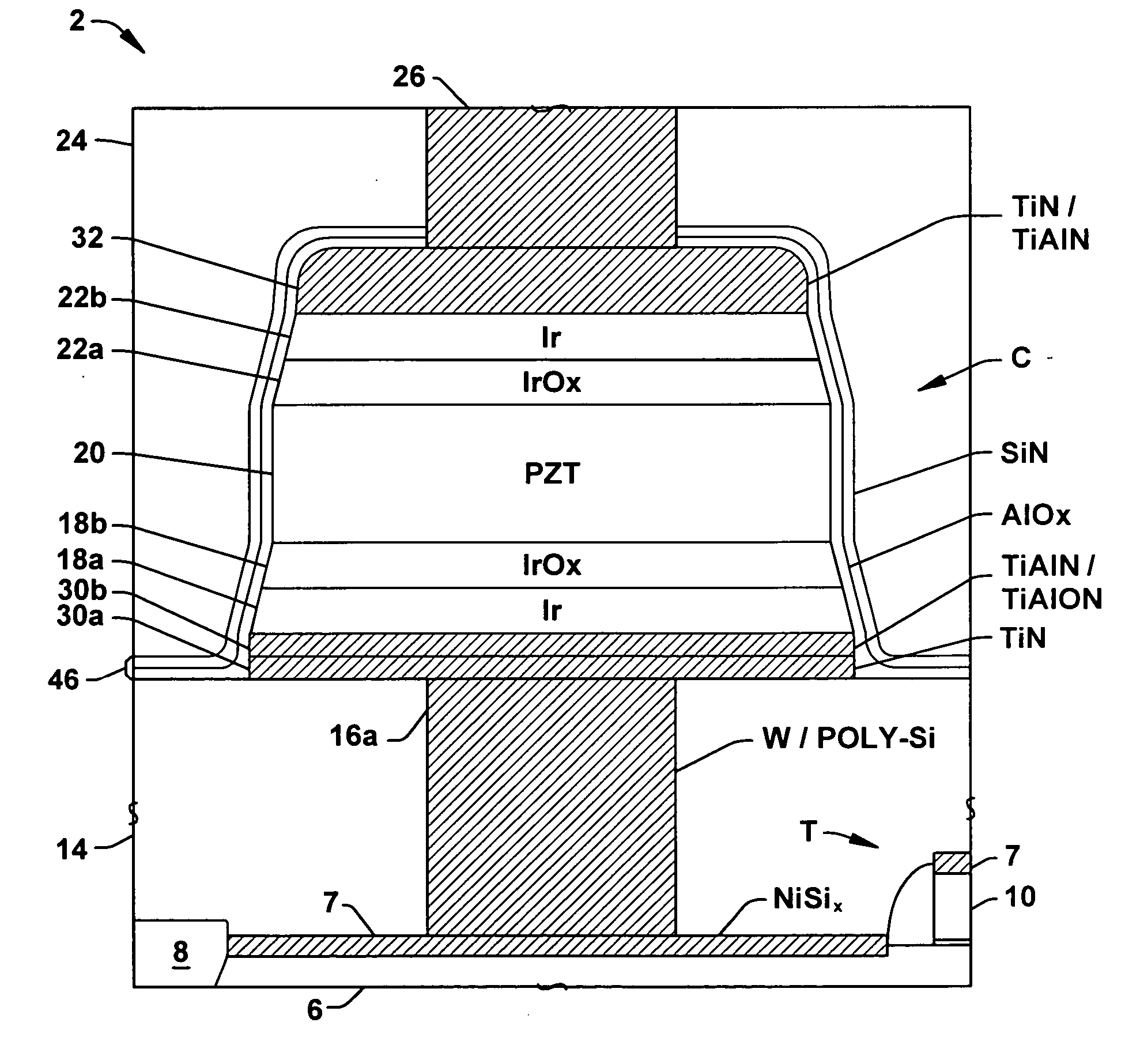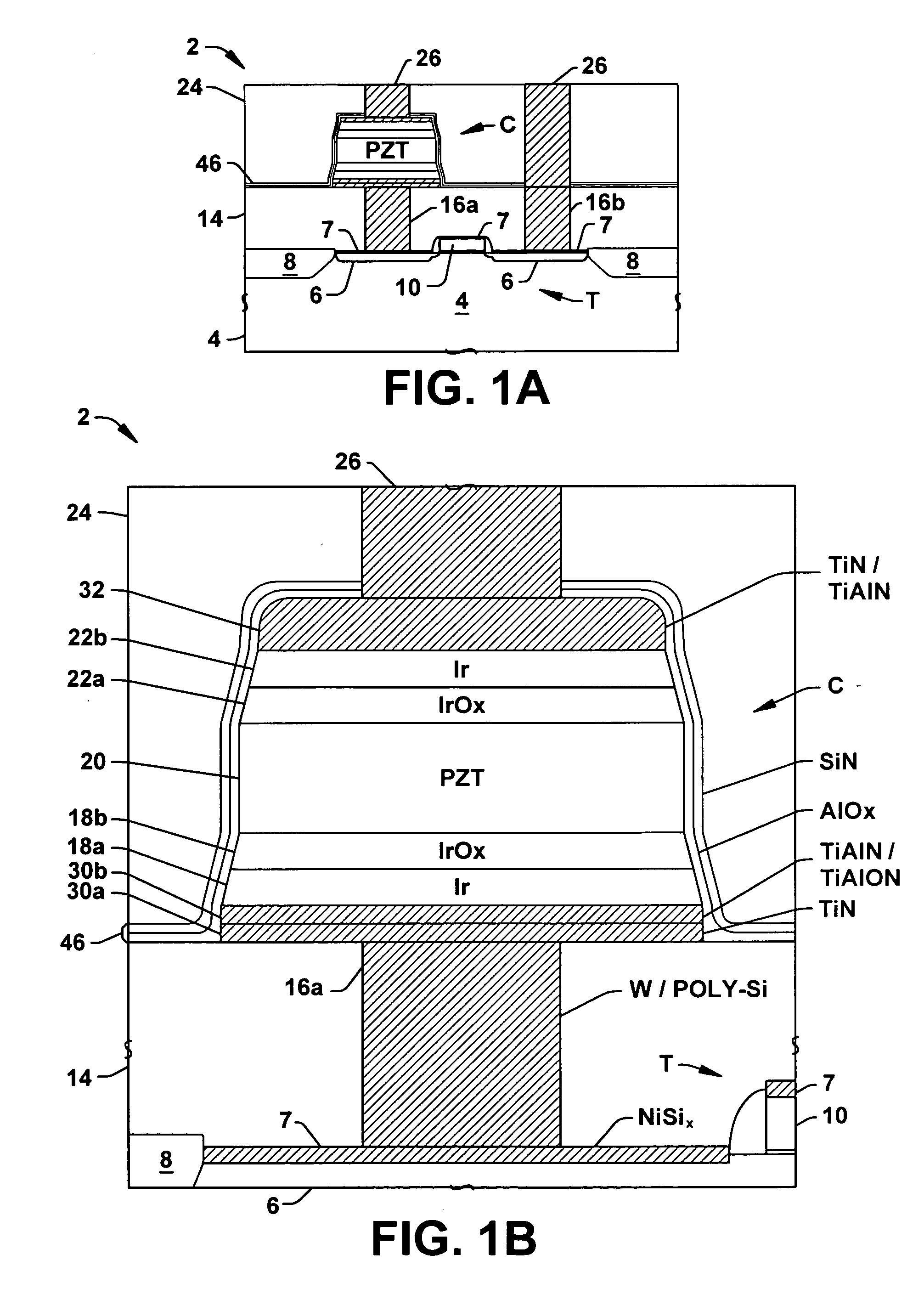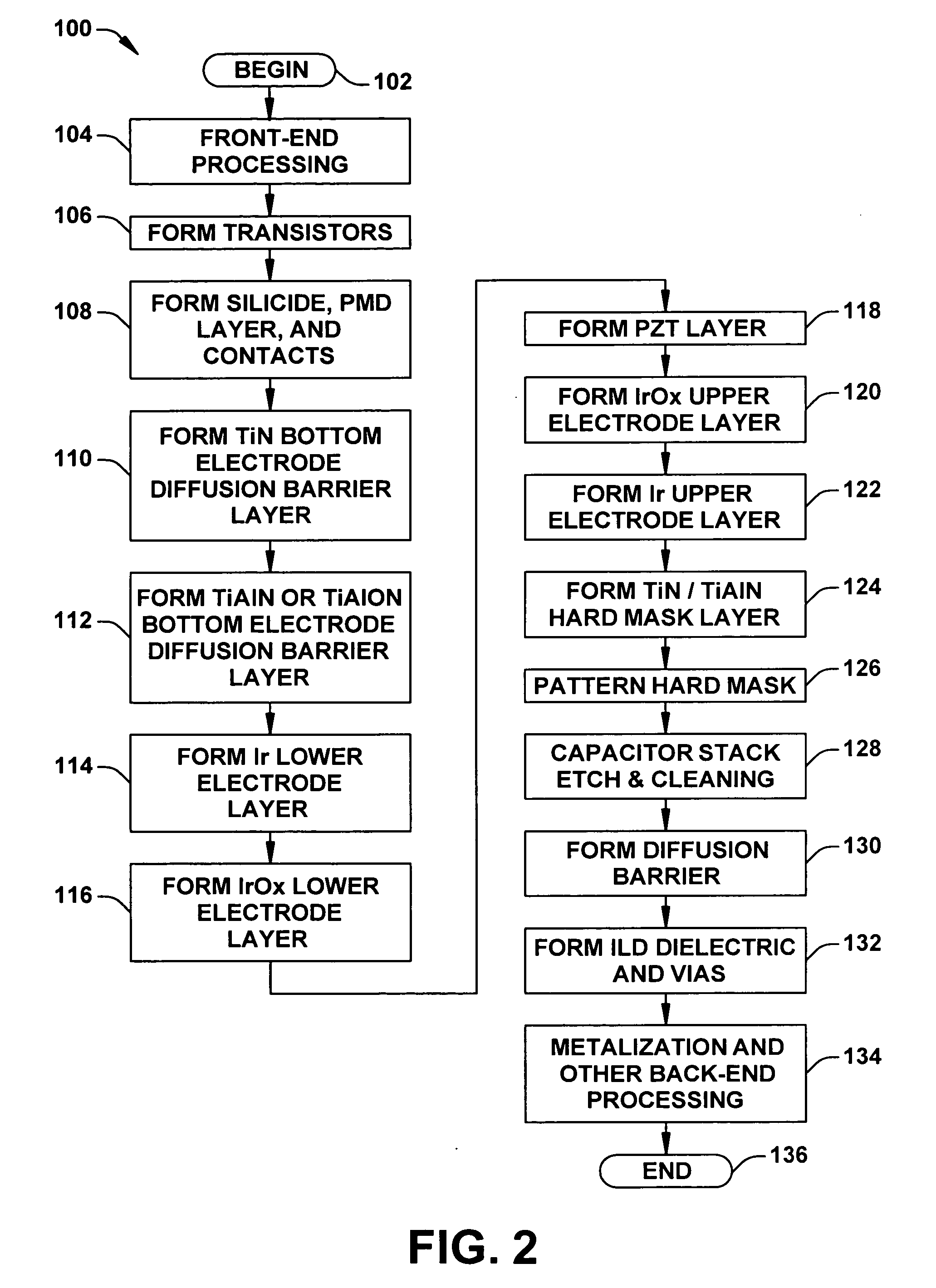Ferroelectric capacitor stack etch cleaning methods
a technology of ferroelectric capacitors and etching, which is applied in the direction of capacitors, basic electric elements, electrical appliances, etc., can solve the problems of achieve the effect of reducing capacitor leakage and other performance degradation, reducing ferroelectric material damage and capacitor leakag
- Summary
- Abstract
- Description
- Claims
- Application Information
AI Technical Summary
Benefits of technology
Problems solved by technology
Method used
Image
Examples
Embodiment Construction
[0016] The present invention will now be described with reference to the attached drawing figures, wherein like reference numerals are used to refer to like elements throughout. The invention relates to the use of high temperature ashing processes and wet cleaning of etched ferroelectric capacitor stack structures, by which capacitor leakage may be mitigated in the fabrication of semiconductor devices. The invention may be carried out in any type of semiconductor device, for example, devices having memory cells with ferroelectric cell capacitors or other devices, such as integrated circuits, in which ferroelectric capacitors are used. The various aspects and advantages of the invention are hereinafter illustrated and described in conjunction with the drawings, wherein the illustrated structures are not necessarily drawn to scale.
[0017]FIGS. 1A and 1B illustrate an exemplary ferroelectric memory cell (1T1C) with a cell transistor T and a ferroelectric capacitor C in a semiconductor ...
PUM
 Login to View More
Login to View More Abstract
Description
Claims
Application Information
 Login to View More
Login to View More - R&D
- Intellectual Property
- Life Sciences
- Materials
- Tech Scout
- Unparalleled Data Quality
- Higher Quality Content
- 60% Fewer Hallucinations
Browse by: Latest US Patents, China's latest patents, Technical Efficacy Thesaurus, Application Domain, Technology Topic, Popular Technical Reports.
© 2025 PatSnap. All rights reserved.Legal|Privacy policy|Modern Slavery Act Transparency Statement|Sitemap|About US| Contact US: help@patsnap.com



